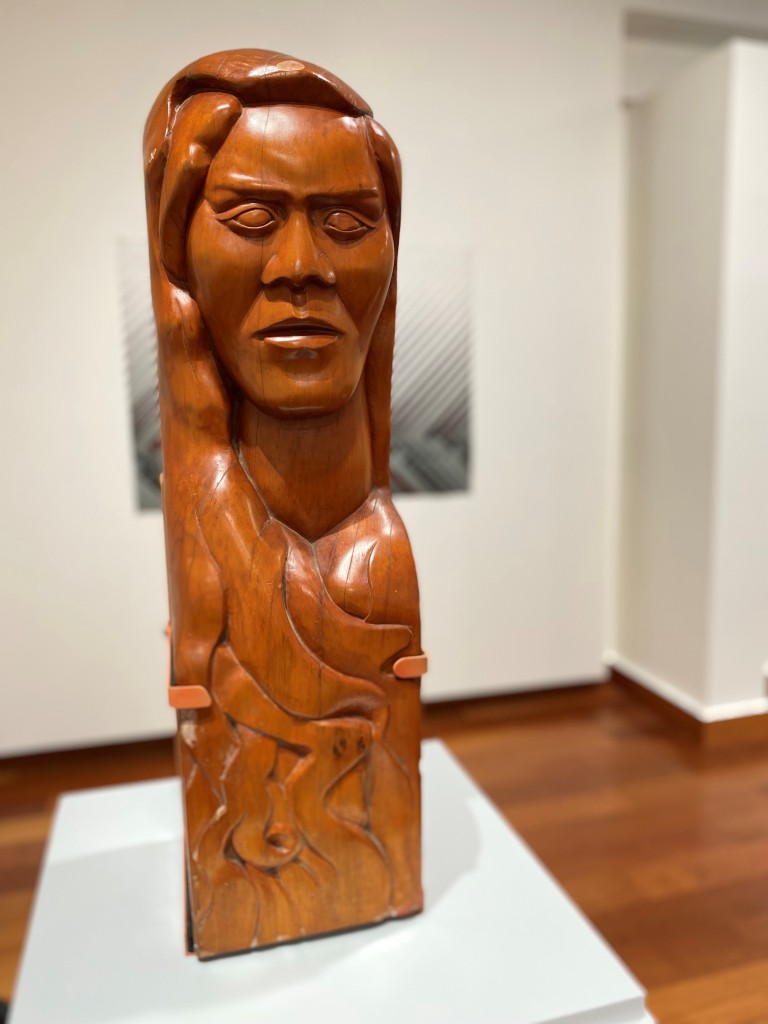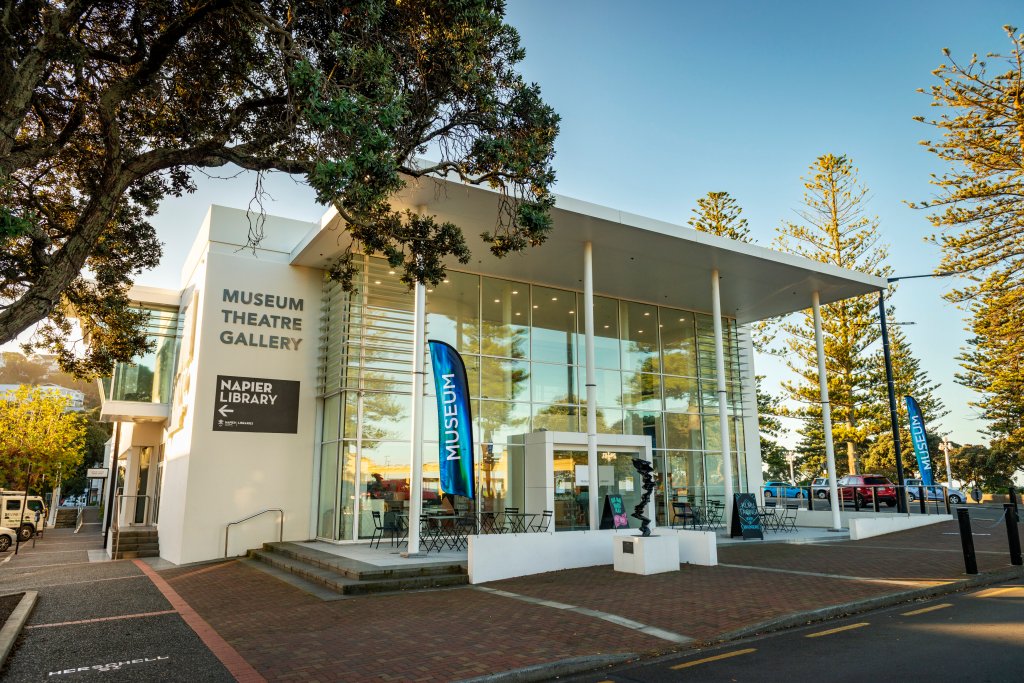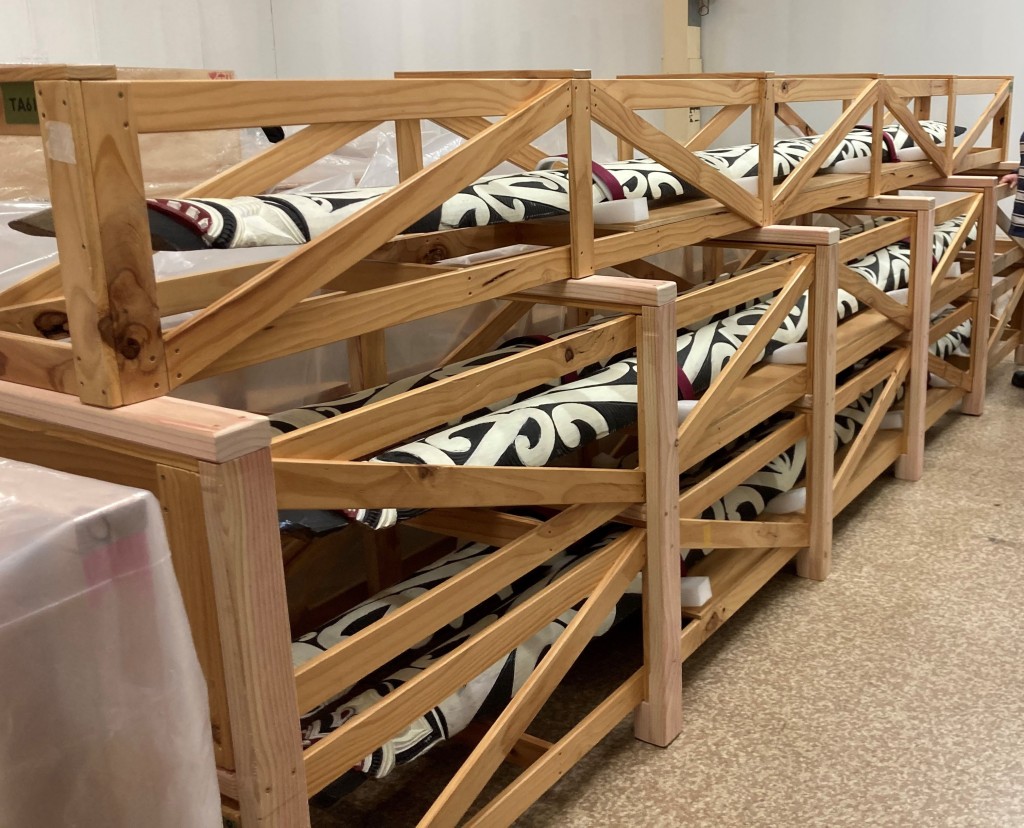
Collection of Hawke’s Bay Museums Trust, Ruawharo Tā-ū-rangi, 85/20/1
Open today is The Light Shone Clear: History. Perspectives. Art. It’s an exhibition that looks at times and events that have shaped Te Matau-a-Mauī/Hawke’s Bay and Aotearoa. It also brings together a wonderful selection of artworks from the Hawke’s Bay Museum’s Trust collection. Each piece in the exhibition offering a view on the past.
What is a bit special about the exhibition is that it brings some significant works out of the collection. This region’s collection is extraordinary, not just in size—although, by comparison, if you take just the Trust’s art collection, it is equal in size to the entire collection of the Dowse Art Museum—but for the number of exceptionally high quality of works in the collection.
Over the last few years, due to the support of the MTG Foundation, the Trust has been able to make some important acquisitions. Among others, a large piece by Ayesha Green (Ngāti Kahungunu), which has recently been on loan to City Gallery in Wellington; and an important work, Ringatu by Paratene Matchitt. Recently, the Trust was gifted a fantastic piece by artist Greer Twiss, Hobson’s Baggage. This will be the first time these large works have come out of storage to be shown at the museum. These fine pieces will sit alongside art works by Philippa Blair, Tony Fomison, Sandy Adsett, and Fiona Pardington.
Central to the exhibition is a recognition of the historical themes embedded within many of the art works. From reflections on land ownership to critiques of periods in history, the artworks offer a window into the complexities of the past.
Alongside overtly political art works, there are those that simply capture the essence of their era, providing a snapshot of bygone times.
What these artworks have in common is their ability to convey unique perspectives; every artwork being a window into an attitude, a point of view. Through the artist’s work, often marginalised or overlooked voices are brought to the forefront, enriching our understanding of the past and challenging dominant narratives.
Now that the history of Aotearoa is being taught in schools, it’s important to give art a real place in telling our stories. We hope that art can open students up to new perspectives, the exhibition serving as catalysts for deeper inquiry, fostering empathy and a more nuanced comprehension of our collective history.
One artwork that encapsulates this ethos is Sidney Mead’s carved portrait Maata Te Taiawatea, created between 1957 and 1960.
The 1950s and 1960s marked a pivotal time among Māori artists, who were reconciling their experiences of both Māori and Pākehā worlds and considering how customary approaches to art making interfaced with international art movements. Mead, reflecting on that time, wrote ‘Māori artists trained in the art schools of the Pākehā are spearheading a movement to change the face of Māori art more radically than ever before.’
In Maata Te Taiawatea, Mead pays homage to his Tūhourangi and Ngāti Awa grandmother, Te Taiawatea Rangitūkehu, a figure renowned for her diplomatic advocacy for tribal land ownership. In carving his ancestor, Mead’s work aligns with the tradition of ancestral carvings that hold narratives of whakapapa. In Te Taiawatea Rangitūkehu’s spiralling hair – likened to currents in the sea – Mead represents oral traditions, where Māori carving originates from the sea. More contemporary however, is the sculpture’s sleek, glossy finish and absence of surface decoration which shows the influence of international modernism on the work.
In this way, The Light Shone Clear: History. Perspectives. Art. not only celebrates the artistic power in the Trust’s collection but also serves as a testament to the enduring power of art to critically reflect on who we are and how we live.
Published in the Hawke’s Bay Today newspaper 13 April 2024 and written by Toni MacKinnon, Art Curator at MTG Hawke’s Bay.








